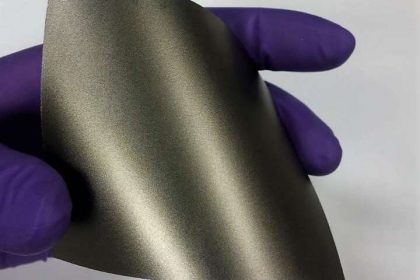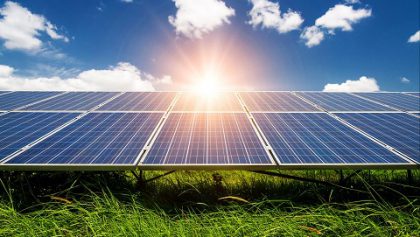 Researchers have used a graphite coating that makes perovskite solar cells waterproof. A cheaper, cleaner and more sustainable way of making hydrogen fuel from water using sunlight is a step closer thanks to new research from the University of Bath’s Centre for Sustainable Chemical Technologies.
Researchers have used a graphite coating that makes perovskite solar cells waterproof. A cheaper, cleaner and more sustainable way of making hydrogen fuel from water using sunlight is a step closer thanks to new research from the University of Bath’s Centre for Sustainable Chemical Technologies.
With the pressure on global leaders to reduce carbon emissions significantly to solve a climate change emergency, there is an urgent need to develop cleaner energy alternatives to burning fossil fuels. Hydrogen is a zero carbon emission fuel alternative that can be used to power cars, producing only water as a waste product.
It can be made by splitting water into hydrogen and oxygen, however the process requires large amounts of electricity. Most electricity is made by burning methane so researchers at the University of Bath are developing new solar cells that use light energy directly to split water.
Most solar cells currently on the market are made of silicon, however they are expensive to make and require a lot of very pure silicon to manufacture. They are also quite thick and heavy, which limits their applications.
Perovskite solar cells, using materials with the same 3D structure as calcium titanium oxide, are cheaper to make, thinner and can be easily printed onto surfaces. They also work in low light conditions and can produce a higher voltage than silicon cells, meaning they could be used indoors to power devices without the need to plug into the mains.
The downside is they are unstable in water which presents a huge obstacle in their development and also limits their use for the direct generation of clean hydrogen fuels.
The team of scientists and chemical engineers, from the University of Bath’s Centre for Sustainable Chemical Technologies, has solved this problem by using a waterproof coating from graphite, the material used in pencil leads.
They tested the waterproofing by submerging the coated perovskite cells in water and using the harvested solar energy to split water into hydrogen and oxygen. The coated cells worked underwater for 30 hours – ten hours longer than the previous record.
To read complete article please click on the following link:
Edited and contributed by: S. Marjani
************************
Why Should Be “A Paid-Subscriber” and “Advertiser”
Keeping an independent media in countries that impose limitations on self supporting media, will help to support the humankind’s freedom. If you believe it, please act to be a PRO-MEMBER by clicking “HERE“, or:
Please send your PR’s directly to the email address of the Chief-Editor in order to be published at once in the world via ” http://pimi.ir ” The address is: aasaatnia@live.com.














